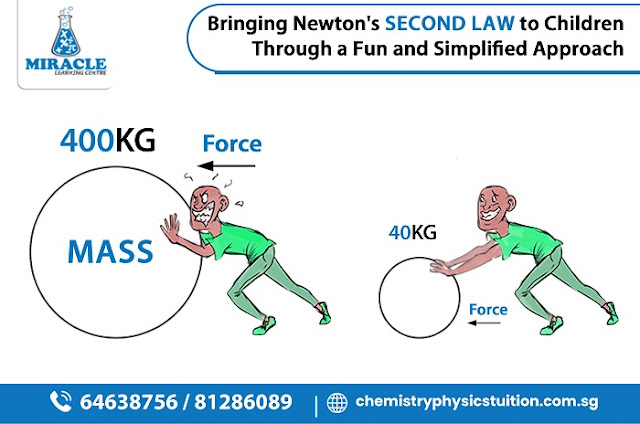Breaking the Code of Atomic Mass to Gain Knowledge of the The key Unit of Matter
Within the enthralling universe of microscopic marvels, where the commonplace gives way to the extraordinary, the mysterious notion of atomic mass comes under the spotlight. Imagine it as the heavyweight champion of the invisible realm, the cosmic weightlifting champion on the subatomic stage. The secret to unlocking the mysteries of matter is atomic mass, the unsung hero of the microscopic ballet. So buckle up and join us on an exciting journey to solve the riddles woven into the very fabric of the universe – the fascinating realm of atomic mass. And fear not, for our cosmic guide through this subatomic maze is none other than the wizardry of chemistry tuition, ensuring that the intricacies of this microscopic ballet become as clear as the starlit night sky.
Understanding Atomic Mass:
At the heart of every substance, from the air we breathe to the stars that twinkle in the night sky, lies the essence of atomic mass. But what exactly is atomic mass? Imagine the nucleus of an atom as the sun, and the electrons in orbit as planets – atomic mass is the sum of the masses of all these particles. It's a delicate balance, a cosmic dance of subatomic particles that determines the weight of an atom.
Atoms are incredibly small, and their masses are conveniently expressed in atomic mass units (amu). One amu is defined as one twelfth of the mass of a carbon-12 atom. This unit provides a standard reference, allowing scientists to compare the masses of different atoms on a common scale.
How to Measure Atomic Mass?
Unlocking the secrets of atomic mass involves the precise technique of mass spectrometry, a step-by-step process that reveals the weight of individual atoms.
- Ionization: Atoms are bombarded to strip them of electrons, turning them into charged ions.
- Acceleration: Charged ions are propelled forward using an electric field, imparting kinetic energy.
- Deflection: In a magnetic field, ions experience varying degrees of deflection based on their mass.
- Detection: The ions, now separated, hit a detector, creating a spectrum that reveals the distribution of masses.
Example: Carbon
Applying mass spectrometry to carbon, with isotopes carbon-12 and carbon-13, scientists analyze the deflection patterns to calculate the weighted average. For carbon, the process yields an atomic mass of approximately 12.01 amu, showcasing the precision of this method in unravelling the intricacies of atomic mass.
The Role of Atomic Mass in the Periodic Table:
As we venture into the periodic table, atomic mass takes on a pivotal role. In this organized chart of elements, elements are arranged in order of increasing atomic number. Interestingly, atomic mass is not always in sync with this order. This deviation is due to the presence of isotopes and their varying abundances.
The maverick here is Dmitri Mendeleev, the father of the periodic table, who ordered elements based on their atomic masses, noticing that certain properties repeated periodically. Today, the modern periodic table uses atomic number for ordering, but atomic mass remains a crucial factor in understanding the periodicity of elements.
Isotopes and the Symphony of Atomic Mass:
Take a closer look at the intricate dance of atomic mass, and you'll encounter isotopes, the virtuosos in the symphony of elemental diversity. Isotopes are like musical variations of the same note, each with a slightly different arrangement. Picture hydrogen, the maestro of isotopic composition, with its three isotopes: protium, deuterium, and tritium.
What distinguishes these isotopic performers is the number of neutrons within their atomic nuclei. This subtle difference in neutron count adds a unique timbre to each isotope, influencing its distinct properties. By acknowledging the presence of isotopes, we delve deeper into the harmonic richness of atomic mass, recognizing that the average mass of an element is not a single, static note but a nuanced composition influenced by the variations of its isotopic ensemble.
Understanding the symphony of isotopes allows us to appreciate the diversity within each element, making the world of atomic mass not just a solo act but a collective masterpiece played by the isotopic orchestra.
How Chemistry Tuition Makes Your Understanding Easy?
It can be a cosmic challenge to set out on an atomic odyssey, but fear not, fellow explorers! Explore the world of chemistry education as your own spacecraft travelling through the enormous cosmos of subatomic marvels. Chemistry tuition is a major focus in Singapore's elite environment, where academic expectations are very high.
Imagine having a dynamic Chemistry tutor as your extraterrestrial mentor who will use interesting teaching strategies and practical experiments to help you understand the mystery of atomic mass. Chemistry tuition in Singapore serves as more than just a stopover for academic purposes—it's your ticket to unlocking the secrets of the periodic table. So fasten your seatbelts, daring students, and allow the Chemistry tutor to serve as your astronomical navigator on this dazzling voyage of comprehension!
Conclusion:
In the vast cosmic tapestry, atomic mass acts as the fundamental thread, intricately weaving together the fabric of matter. From the microscopic realm of atoms to the cosmic ballet of stars, this concept transcends scales, highlighting the interconnectedness of the cosmos. Whether guided by chemistry tuition through the periodic table or contemplating the celestial dance as an astronomy enthusiast, atomic mass serves as the cosmic glue, inviting exploration with curiosity and wonder.




Comments
Post a Comment